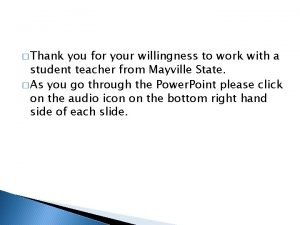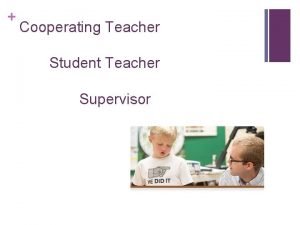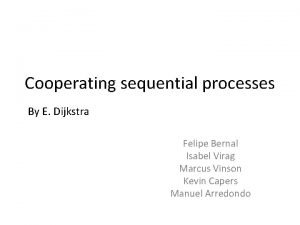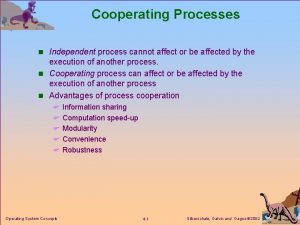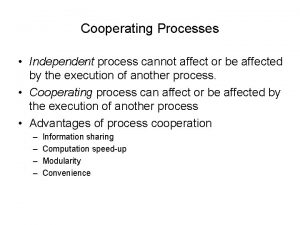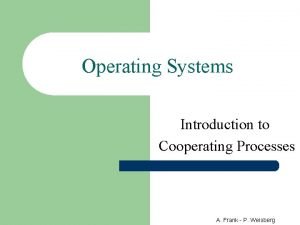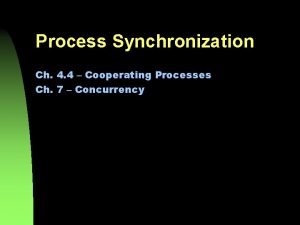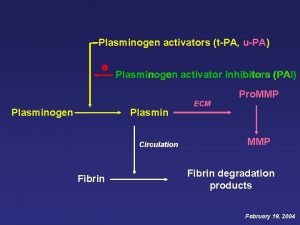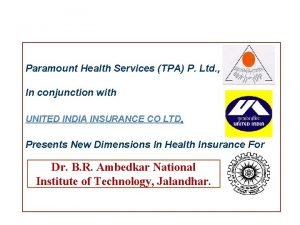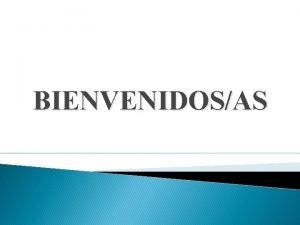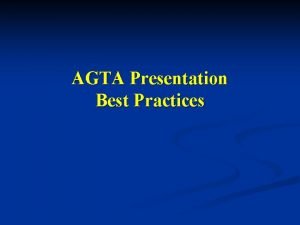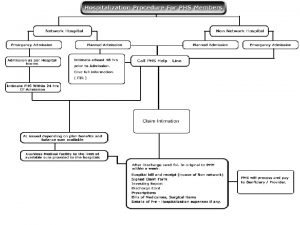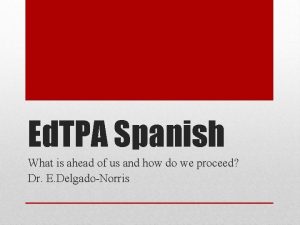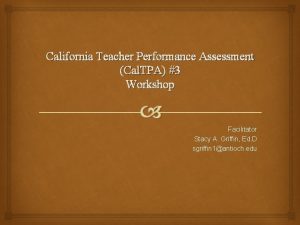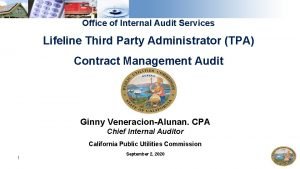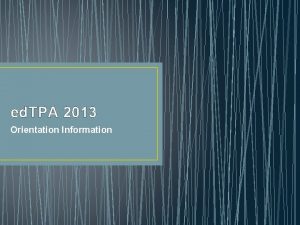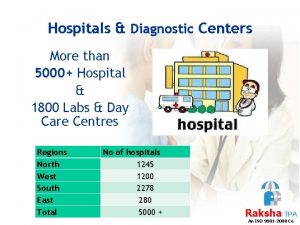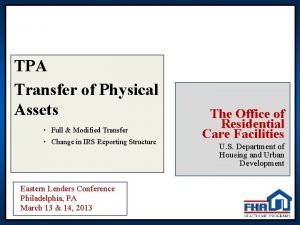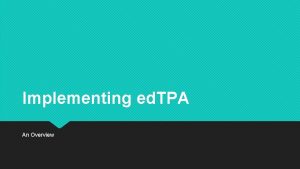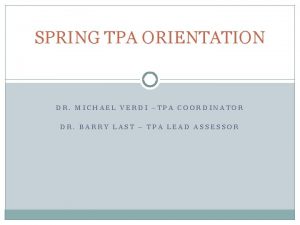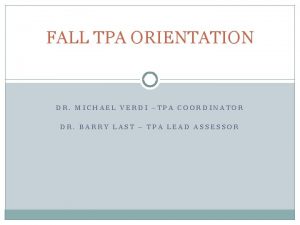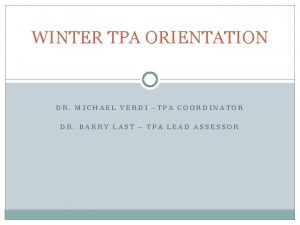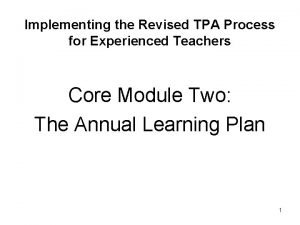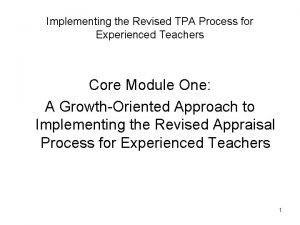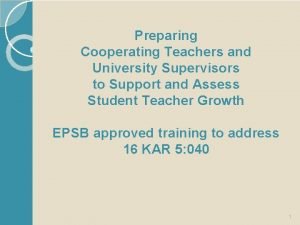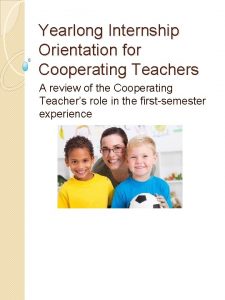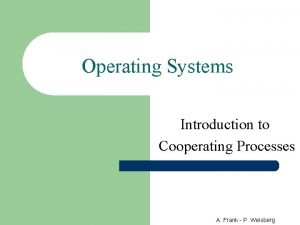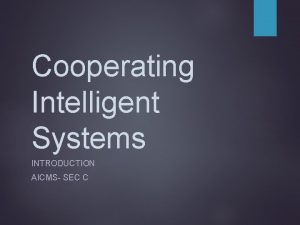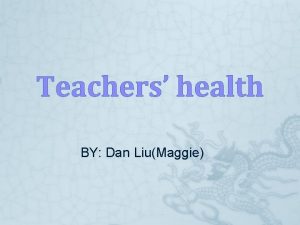The ed TPA An introduction for Cooperating Teachers





















- Slides: 21

The ed. TPA An introduction for Cooperating Teachers and University Mentors

Metrics for Educators • All educators: OTES • (Ohio Teacher Evaluation System) • Novice teachers: RESA • (Resident Educator Summative Assessment) • Student Teachers: ed. TPA • (Educative Teacher Performance Assessment)

The ed. TPA • Of these assessments, you probably know the least about the ed. TPA. • This brief slide show is intended to help you understand its requirements for your teacher candidate, as well as implications for you, the Classroom Mentor Teacher or University Mentor.

What is the ed. TPA? • The first national assessment for student teachers. • Subject-specific • Performance-based • Designed by faculty at Stanford University, with input from teacher educators & K – 12 teachers. • Currently adopted by 30+ states in some form: • Licensure requirement, or • Program completion requirement • Evidence submitted as electronic portfolio to Pearson Education during early student teaching • Designed to judge a teacher candidate’s readiness to teach. • Intended to be predictive of effective teaching/student learning.

Shift in Thinking … From: “We got through the material. ” …To: “How have I impacted student learning? ” …From: “But I’ve always wanted to be a teacher!” …To: “Look…I can teach!” “There is growing agreement that individuals entering teaching must be prepared to meet the academic needs of all students. With new, higher standards and greater diversity among students, teachers must develop more sophisticated teaching skills and be able to use them from the first day they enter the classroom. ” Source: Stanford University, 2013 ed. TPA Field Test: Summary Report, p. 2.

The ed. TPA Requires Teacher Candidates to Demonstrate Skills in… I. Planning for Instruction & Assessment II. Instructing & Engaging Students in Learning III. Assessing Student Learning Excellent rehearsal for Ohio's RESA, which is completed in the 3 rd year of teaching.


The Teaching – Learning Cycle

Task I: Planning for Instruction & Assessment • Student Teacher submits… • • 3 – 5 sequential lesson plans Planned assessment(s) Ancillary materials 9 -page response justifying thinking behind plans/assessment • Key foci: • • • Learning segment's central focus Alignment of focus, objectives, procedures, assessments Using knowledge of students to plan instruction Differentiation Supporting students in mastering/using unfamiliar Academic Language: • What demands will this place on students? How will ST facilitate?

Task II: Instructing & Engaging Students in Learning • Student Teacher submits… • One-two 10 -minute unedited video clips of instruction • Responses to prompts ( six typed pages) • Key foci: • • • Promoting a positive learning environment Student engagement (vs. participation) Differentiating instruction/assessment Deepening/extending student learning Academic language supports & student use of target language Analysis of teaching

Task III: Assessing Student Learning • Student Teacher submits… Assessment instrument Evaluation criteria Chart detailing assessment results 3 student work samples (with evidence of helpful teacher feedback that requires action on the student's part) • Evidence of student academic language use • 10 single-spaced typed pages in response to prompts • Some subject areas submit up to 10 minutes of video evidence. • • • Key foci: • • Analyzing whole-class, subgroup, individual learning patterns Language supports provided to students Students’ academic language understandings/use Next instructional steps

Evaluation • External Pearson-trained content experts (educators, administrators, etc. ) score portfolios against evidence-based criteria for effective teaching. • Generally, 15 rubrics cover all aspects of three key tasks & five foci: u. Planning u. Instruction u. Assessment u. Academic Language u. Analysis of Teaching

High-stakes Capstone Evaluation u Completing the ed. TPA is a student teaching requirement u Cost to student teachers: $300 u. Pays for… ued. TPA handbooks u. Submission website & support u. Trained scorers u. Score reports u. Associated services u A rigorous process that takes several weeks to complete. u Passing may eventually become Ohio licensure requirement u. Until then, the state encourages its use, and most major Ohio teacher prep programs utilize the ed. TPA.

Impact on Student Teachers • The ed. TPA should be a natural part of planning, instruction, and assessment in the classroom. • ed. TPA lessons should not be distinct from other lessons. • All lessons should demonstrate thorough planning & best-practice instruction/assessment/reflection. • Full lesson plans (objectives, materials, procedures, assessments, differentiation, etc. ) should be written for each day and submitted early for approval/revision. • A binder with all daily lesson plans should be available to both the CMT and University Mentor at any given time. • This is a BGSU requirement! • However… • Completing the ed. TPA is stressful for STs. (Lots of writing/thinking) • Much less stressful if TCs are organized and stay on top of tasks via good pacing/task management. • For most, portfolio is submitted by mid-semester so scores can be received prior to end of semester. • Of a total possible 75 points, BGSU STs are required to score 40 or above. • Institution’s scores are published and compared across state. • So far, BGSU candidates have done very well.

Student Teachers Should NOT. . . • Procrastinate (on the ed. TPA or any other student teaching responsibility)! • Work on the ed. TPA during the school day (unless completing one of the few ed. TPA tasks that can be done only during class time. . . filming, for example). • Lesson plans, commentary, etc. , are to be completed outside the school day. • Ask/hint for, or be given a reduced teaching load until the ed. TPA is completed. • The CMT's customary schedule for STs should be followed. • Candidates need to be organized and manage time wisely. • This can easily be done if lesson plans are in place, and the ST paces him/herself by responding to at least one ed. TPA prompt several times per week. • Note: All STs were told to begin this process prior to the semester's start.

What Can/Should Cooperating Teachers, UMs Do to Help? • Not much! • The ed. TPA is an assessment of the student teacher’s knowledge, abilities, skills at this early point in his/her career. • What may be done: • Assign unit topics early, so intern can complete Task I ASAP. • Confer with intern about ed. TPA requirements. • Hold normal conversations about lesson/unit plans, other duties. • Help STs think deeply and reflectively! Ask questions dealing with… • lesson alignment (Do assessments and procedures match unit focus/lesson objectives? ) • why/how assessments are appropriate • how learning activities, instruction, questions promote deep learning • which students need differing instruction/assessment, and how that is implemented • how academic language is taught and student use supported • how written/oral feedback helps students deepen grasp of concepts • Implications of assessment data for ST and different students

More Permissible Help • Allow intern to teach early, film often, conform with ed. TPA requirements. • Be cooperative in allowing intern to send video release form to parents. • Note that since artifacts will be uploaded to a third-party website (Pearson Education), school districts’ “blanket” permission forms are often insufficient. • Assist with videotaping, if possible. • Some campus instructors schedule one ed. TPA writing day. • (Writing days vary by program/major, depending on availability of campus lab space. Seminar instructor should communicate date. ) • Be positive about the learning/growth that can result from completing the ed. TPA. • Realize your student teacher will be under considerable stress! • However, report to the University Mentor any cases of ST "slacking. "

What You Should NOT Do • Do not… • specifically dictate to your student teacher detailed, step-by-step instructions for planning, instruction, & assessment. • refuse to allow him/her to teach inquiry-based lessons, etc. , as required for the ed. TPA (and good teaching). • edit or tell your ST what to write in response to prompts. • complain or be negative about the ed. TPA, regardless of your personal thoughts. • offer detailed feedback on an ed. TPA lesson. • allow your student teacher to defer ST responsibilities until after ed. TPA is completed! Again, CMTs and UMs may confer with student teachers & make suggestions about lesson plans, assessments, classroom management, etc. , as customary. However, interns should have many ideas of their own, and should be fairly adept at crafting & developing them in early student teaching. Ultimately, the instructional plans, assessments, etc. , should largely be the intern’s own work, with input from you.

Resources for Student Teachers ued. TPA Handbooks: u Business Education u Early Childhood Education u Middle Childhood (Math, Science, Social Studies, & English/Language Arts) u Secondary Mathematics u Secondary English/Language Arts u Secondary History/Social Studies u Secondary Science u Physical Education u Performing Arts (music, dance, theater) u Special Education u Visual Arts u World Language u. The student teaching seminar instructor!

Resources for You u. Pearson ed. TPA website: www. edtpa. com u. General information: uhttp: //edtpa. aacte. org/ u. Questions: ued. TPA-support@aacte. org u. AACTE University of Minnesota ed. TPA Power Point: uhttp: //edtpa. aacte. org/

Questions? • Contact your teacher candidate’s seminar instructor or • Dr. Nancy Fordham BGSU ed. TPA Coordinator nfordha@bgsu. edu 419 -372 -9819
 Kim kroll teachers pay teachers
Kim kroll teachers pay teachers Thank you for your willingness to participate
Thank you for your willingness to participate Thank you to cooperating teacher
Thank you to cooperating teacher Cooperating sequential processes
Cooperating sequential processes Cooperating process in operating system
Cooperating process in operating system Cooperating process
Cooperating process Race condition
Race condition Cooperating process
Cooperating process Tpa upa
Tpa upa Raksha tpa website
Raksha tpa website 1800226655
1800226655 Ikrar santri tpa
Ikrar santri tpa Tpa planificaciones
Tpa planificaciones Supershuttle tampa
Supershuttle tampa Paramount health insurance preauth form
Paramount health insurance preauth form Tpa spanish
Tpa spanish California tpa
California tpa Lifeline tpa
Lifeline tpa Tpa handbook
Tpa handbook Vertiefungskurs steuerrecht
Vertiefungskurs steuerrecht Raksha tpa intimation
Raksha tpa intimation Transfer of physical assets
Transfer of physical assets

